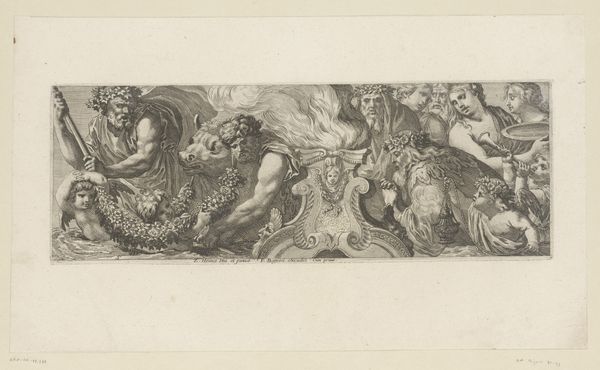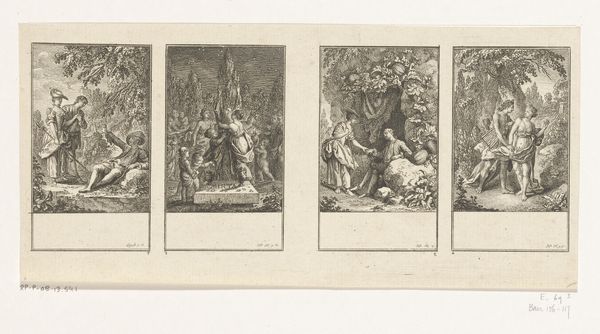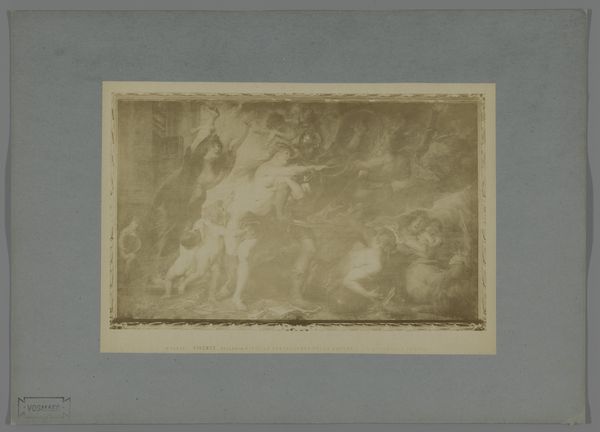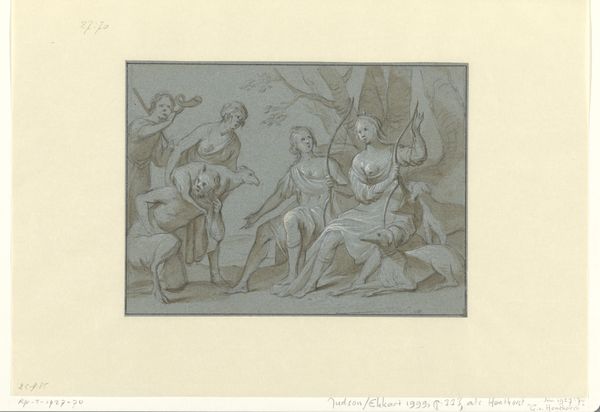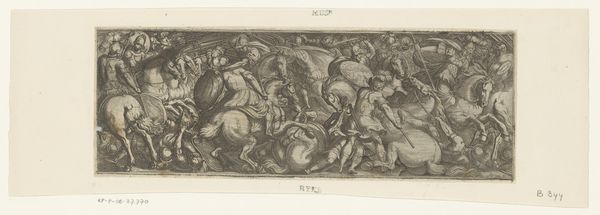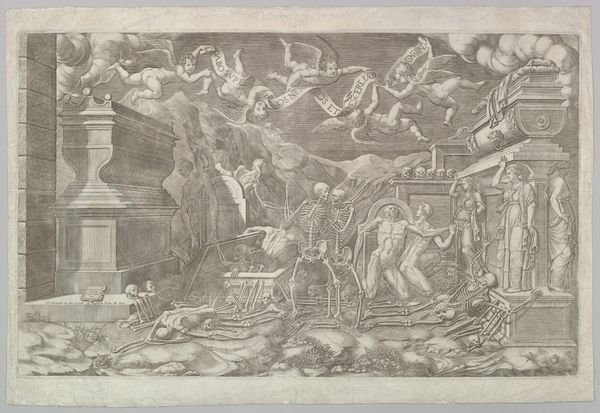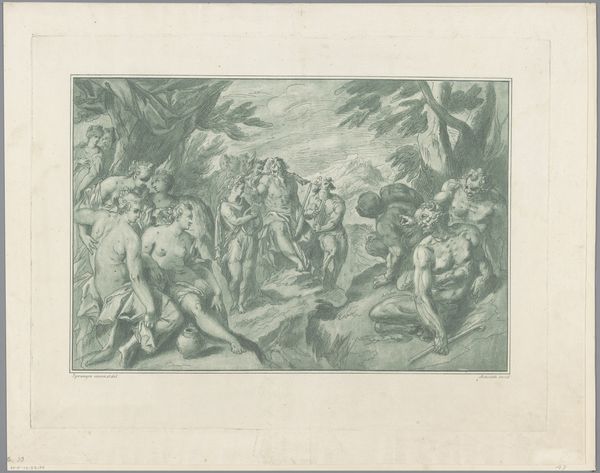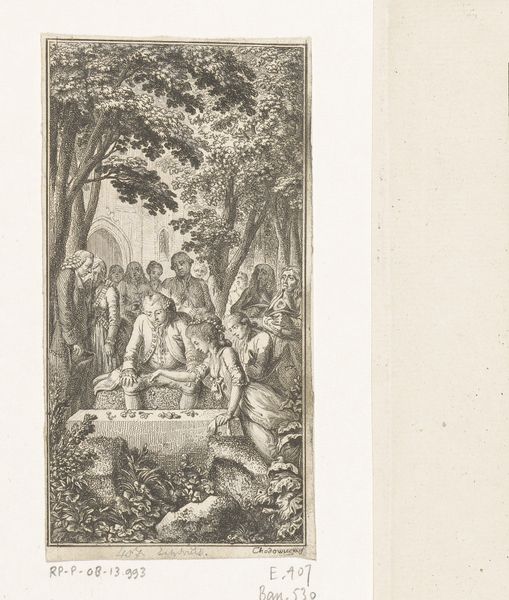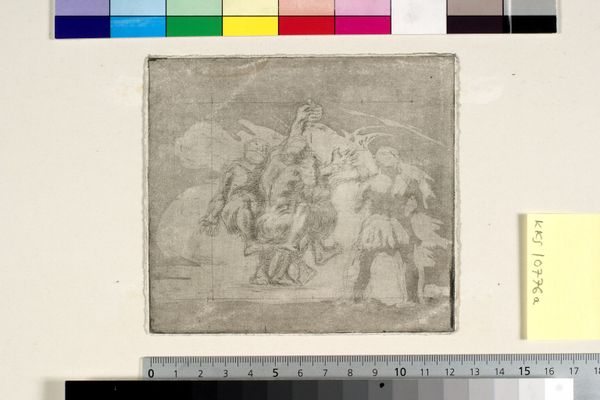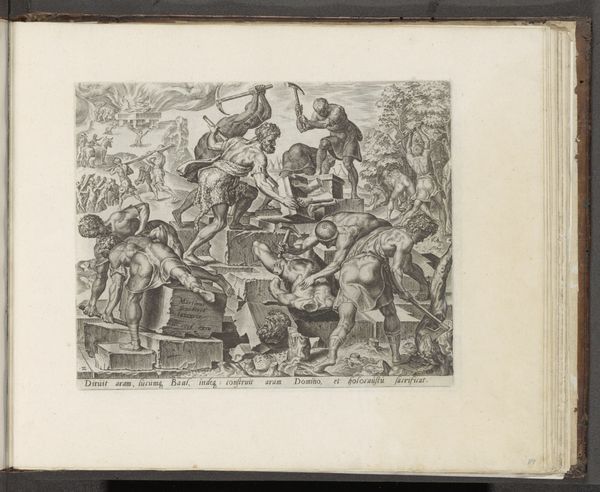
drawing, paper, ink
#
drawing
#
narrative-art
#
paper
#
11_renaissance
#
ink
#
history-painting
Dimensions: 233 mm (height) x 217 mm (width) (bladmaal)
Curator: This ink drawing on paper, simply titled "A dance scene," was created by Agostino Melissi sometime between 1615 and 1683. It's part of the collection at the SMK, Statens Museum for Kunst. Editor: It's immediately striking, isn't it? A sort of muted chaos, everyone captured mid-action. There's a figure at the center struggling as if being sacrificed; what are we really looking at? It feels intense. Curator: What grabs me is the physicality embedded in the process. Ink drawings like this weren't mere sketches; they were crucial tools. Artists in Melissi's era used them to work out compositions and ideas, often as preparatory studies for larger paintings or prints. Notice the tonal variations created through layering and hatching, reflecting both the texture of the paper and the artist's process. Editor: Layering is the word. This is building a narrative with line and shadow. It is as if the artist lets us witness how the scene is unfolded. See that character to the right, perhaps a leader, confidently directing attention elsewhere; it does feel historically staged somehow. There’s something raw and deeply human about seeing those first, exploratory marks. Curator: Indeed. These weren't necessarily meant for public consumption, offering valuable insight into the artistic labor behind these narrative compositions and its links with other historic paintings of the period. We might also consider the socio-economic context, imagining Melissi in his studio, potentially collaborating with assistants, using specific tools, and subject to patrons’ expectations. Editor: To feel the artist working through his thought, to be inside of that process so directly, well that takes art viewing to a deeper level for me, almost a conversation. The historical aspects you are bringing forward really start to paint a picture—or should I say ink—of what art creation looked like. It is not only pretty pictures, but the hard labor of humans working hard to leave a statement! Curator: Absolutely. It urges us to consider art as something crafted rather than just purely imagined. I leave looking closer, perhaps searching out the physical context every piece embodies. Editor: And I wander off thinking how, through those historic fingerprints of labor, can something truly magical spark off through lines of ink and time itself.
Comments
No comments
Be the first to comment and join the conversation on the ultimate creative platform.

